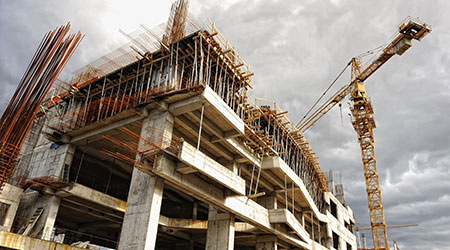FM Survey Offers Insight on Facility Budgets, Staffing
More than 40 percent of FMs report increases in capital and operating budgets, with a similar number reporting no change.
2017 was a pretty good year for facility budgets and staffing levels, and 2018 promises to be even better, according to Building Operating Management's annual FM Pulse survey. The survey covers capital and operating expense budgets as well as staffing levels for 2017. It also covers expectations for 2018 for CapEx budgets, OpEx budgets, and staffing levels.
The full report, which follows this introduction, breaks down budget and staffing survey responses by nine different building types: corporate office, leased space, medical, higher ed, K-12, hospitality, and federal, municipal, and state government. For each type of building, the report shows percentage increases and decreases in current (2017) year capital and operating expense budgets, next year (2018) capital and operating expense budgets, and current and next year staffing levels.
Across all building types, 45 percent of respondents reported that operating budgets increased in 2017, while 41 percent saw no change. Only 16 percent said that their operating expense budgets had been cut.
Here are the overall national current year (2017) operating budget changes (1,888 responses):
• Decreased by 5 percent or more: 6 percent
• Decreased by less than 5 percent: 10 percent
• Increased by 5 percent or more: 19 percent
• Increased by less than 5 percent: 24 percent
• Stayed the same: 41 percent
It was a similar story for capital budgets: 40 percent of facility managers said they got an increases in their capital budgets, 46 percent reported no change, and only 14 percent were given budget cuts.
Here are the overall national current year (2017) capital budget changes (1,894 responses):
• Decreased by 5 percent or more: 8 percent
• Decreased by less than 5 percent: 6 percent
• Increased by 5 percent or more: 27 percent
• Increased by less than 5 percent: 13 percent
• Stayed the same: 46 percent
Respondents to the survey, conducted in the fall of 2017, were optimistic that their 2018 budgets would be even healthier. Again looking across all building types, 45 percent anticipated an increase in their operating budgets, 40 percent foresaw no change, and 15 percent were getting ready to make do with a smaller budget.
Here are the overall national expected next year (2018) operating budget changes (1,876 responses):
• Decreased by 5 percent or more: 5 percent
• Decreased by less than 5 percent: 10 percent
• Increased by 5 percent or more: 21 percent
• Increased by less than 5 percent: 24 percent
• Stayed the same: 40 percent
For capital budgets, the numbers were nearly the same: 41 percent expected an increase, 46 percent predicted no change, and 13 percent believed they would have a budget cut.
Here are the overall national expected next year (2018) capital budget changes (1,884 responses):
• Decreased by 5 percent or more: 6 percent
• Decreased by less than 5 percent: 7 percent
• Increased by 5 percent or more: 27 percent
• Increased by less than 5 percent: 14 percent
• Stayed the same: 46 percent
The survey numbers are also positive when it comes to staffing levels. The FM Pulse survey asked respondents to indicate whether they expected to add staff, cut staff, or keep staff levels the same. The number expecting to increase staff was nearly twice as high as the number expecting to reduce or eliminate staff.
Here are the overall national staffing level changes for the current year (2017) (1,911 responses):
• Added positions: 29 percent
• Kept staffing unchanged: 55 percent
• Reduced/eliminated positions: 16 percent
Respondents were somewhat more optimistic about staffing for 2018, with more than 7 times as many expecting staff increases as compared to decreases.
Here are the overall national staffing level changes for next year (2018) (1,909 responses):
• Added positions: 33 percent
• Kept staffing unchanged: 60 percent
• Reduced/eliminated positions: 7 percent
It should be noted, however, that historically, survey respondents have frequently estimated high for adding staff and low for reducing staff.
Data from the FM Pulse survey included salary information for a wide range of facility titles. A searchable database of the salary information is available on the Career Center on Facilitiesnet.com:
The FM Pulse survey also provided benchmarking data on facility department staffing levels for maintenance, custodial, and grounds care employees.
The FM Pulse survey was conducted by email by Facilitiesnet.com, the online home of Building Operating Management and Facility Maintenance Decisions magazines. We received 1,925 responses to the survey from August through October 2017.
Related Topics:















